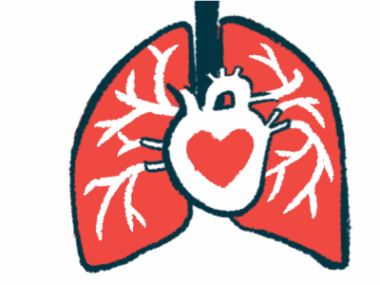Sarcoidosis tied to higher long-term venous thromboembolism risk
Patients, nonpatients who developed VTE had similar mortality rates
Written by |

People with sarcoidosis are significantly more likely to develop venous thromboembolism (VTE), which occurs when a blood clot forms in a vein, over 10 years than the general population, a nationwide study in Denmark suggests.
And while there are substantial differences in clinical characteristics between those who develop VTE who do and don’t have sarcoidosis, both had similar three-month mortality rates.
“Our findings highlight the importance of increased awareness among physicians of VTE among patients with sarcoidosis,” the researchers wrote. The study, “Long-term risk of venous thromboembolism in sarcoidosis: a nationwide cohort study,” which was published in CHEST, also highlights the importance of preventing these events in high-risk patients, such as those with sarcoidosis.
Sarcoidosis is an inflammatory disease that leads to small clumps of immune cells, called granulomas, forming in various tissues and organs, often the lungs and lymph nodes, affecting their function. Chronic inflammation can be considered a risk factor for VTE by raising the probability that blood clots will form.
VTE includes deep venous thrombosis — when the blood clot forms in a deep vein, commonly the legs — and pulmonary embolism, a potentially life-threatening complication of deep venous thrombosis that occurs when the clot detaches and travels to the lungs.
However, “unlike other inflammatory diseases including [lupus] and rheumatoid arthritis, data on the risk of VTE in sarcoidosis are sparse,” the researchers wrote. “Data on the characteristics, treatment, and prognosis of patients with sarcoidosis developing VTE are also lacking.”
Comparing VTE risk
To know more, researchers in Denmark examined the long-term risk, characteristics, and prognosis of VTE in people with sarcoidosis compared with the general Danish population and non-sarcoidosis patients with VTE.
A total of 14,742 adults with sarcoidosis and no previous history of VTE were included and matched with 58,968 people from the general population. They were mainly men (57.2%) and had a mean age of 44.7. Sarcoidosis patients also had a higher prevalence of cancer and liver disease.
Sarcoidosis patients had a significantly higher 10-year risk of developing VTE than the general population (2.9% vs. 1.6%). The risk was also higher for pulmonary embolism (1.5% vs. 0.7%) or deep venous thrombosis (1.6% vs. 1.0%) separately. All-cause mortality at 10 years was also significantly higher among people with sarcoidosis than the general population (10.3% vs. 8%).
In a multivariate analysis, which looks at variables collectively, sarcoidosis was associated with a 4.94 higher probability of having a VTE in the first year after diagnosis, and a 1.65 higher probability after the first year than the general Danish population. Age, chronic kidney disease, and cancer were considered risk factors for developing VTE with sarcoidosis.
The associations persisted when excluding patients with a history of cancer or with incident cancer during follow-up, or patients prescribed anticoagulants within six months before the study began. Anticoagulants are a type of medication used to prevent blood clots from forming.
A total of 479 sarcoidosis patients developed VTE during follow-up, which lasted a median of 8.8 years. For comparison, 163,572 adults with a first-time VTE diagnosis and no history of sarcoidosis were identified.
Those with sarcoidosis who had VTE were younger (median age, 61.2 vs. 68), more often male (53.9% vs. 48.1%), and more frequently had a pulmonary embolism as a first-time VTE (55.1% vs. 44.3%) than non-sarcoidosis VTE patients.
Sarcoidosis patients who developed VTE also had a higher prevalence of heart failure, diabetes, chronic kidney disease, chronic obstructive pulmonary disease, and liver disease. They did have a lower prevalence of peripheral artery disease, a circulatory problem in which narrowed arteries reduce blood flow to the limbs, however.
Despite substantial differences in clinical characteristics between VTE patients with and without sarcoidosis, the three-month mortality rate between the two groups was similar.
“Nevertheless, the high three-month mortality of around 10% following VTE underlines the importance of preventing these events, especially in patients at high risk of VTE, which may now also include individuals with sarcoidosis,” the researchers wrote.






